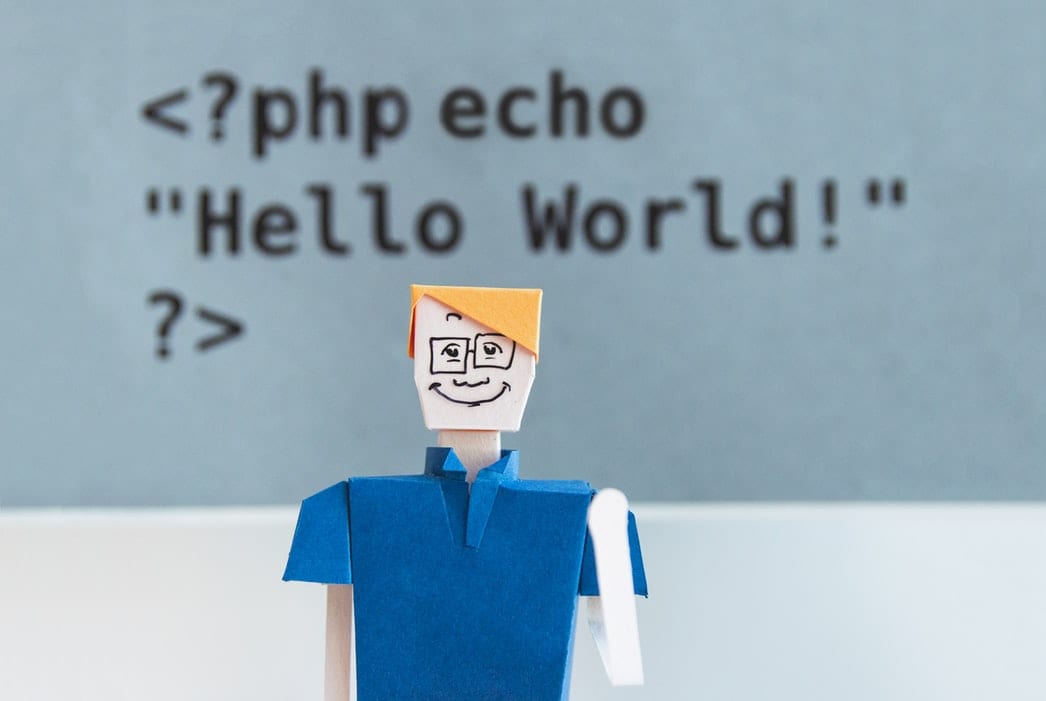There are several types of coding languages used for programming, and all of them have different strengths and uses. Every program, app, and machine that has a computer in it runs on code, so it makes sense that there are hundreds of coding languages to choose from.
This guide breaks down the different types of coding languages, their uses, and what info can be achieved by using them. You’ll learn about programming paradigms and how to choose the best language for your needs. We also cover some of the easiest computer programming languages for beginners hoping to master tech skills.
The Main Types of Coding Languages

There are many types of coding languages. This is because the base language that computers speak, which is just ones and zeros, is far too difficult to use alone. We need some kind of in-between language that humans can use to give effective orders to computers in a reasonable amount of time.
Because all computer programming languages are just in-betweens, the different types of coding languages provide different levels of functionality. The first factor to consider when organizing these coding languages is whether it is high-level or low-level.
High-Level Programming Languages
High-level coding languages have a higher level of abstraction. This means they are closer to human language and farther from machine code. High-level languages are easier to learn and use, but they usually offer less functionality and direct control over the computer. The first high-level languages were algorithmic languages like ALGOL and C, and were designed to handle complex equations.
High-level languages tend to be more automated, where a single programming command actually does many pre-programmed things to make programming easier and more efficient. Because programs written in a high-level language work across multiple systems, algorithmic and other high-level languages quickly caught on and became popular.
Low-Level Programming Languages
Low-level coding languages have a lower level of abstraction, and as you might expect, are the opposite of high-level languages. They are closer to binary and farther from human language. A low-level language is harder to learn and use, but offers more functionality and direct control over the computer. This type of coding language allows programmers to create far more detailed and efficient computer software.
Assembly languages are low-level languages that exist one rung above machine language. An assembly language allows professional programmers to create shorthand names for memory blocks, thus speeding up the development process.
Programming Paradigms
Beyond high-level or low-level there are different styles of programming called paradigms. Programming paradigms are groups of languages classified by various characteristics. Below are some of the major types of programming paradigms.
Object Oriented Programming
In object oriented programming, code and data are referred to as objects. The instructions given by the coder manipulate the objects through predefined methods. This is the most common programming paradigm. Some examples of programming languages that fit within this paradigm are C++, Java, and Python.
Functional Programming
The functional programming paradigm has a very logical approach to software construction. It uses pure functions and focuses more on the “what” than the “how”. Functional programming has uses in academia and industry and is often used to teach and solve algebraic concepts.
Procedural Programming
In procedural programming, programs consist of sequences of instructions to be followed. It offers a very linear approach to coding. Some examples of programming languages within this paradigm include PHP, Lisp, C, and Python.
Logical Programming
In logical programming, coders tell a model what they want to accomplish instead of how they want to accomplish it. Logic is used to infer and interpret knowledge and data. It is sometimes used in database management and genetic and evolutionary programming.
Database Programming
Database programming is used to store and update data for applications and other software. It can draw relationships between different data sets and ensure data is not duplicated. The most popular language for database programming is SQL.
How to Choose a Programming Language
As we learn about the different types of coding languages throughout this article, you might be wondering how to choose a programming language to start learning. To answer this question, you’ll need to decide what you want to accomplish with your new coding knowledge.
Generally, high-level programming languages are more accessible for beginners, but the language you choose within this category depends on your individual goals. In the following section, we detail some of the best coding languages to use for different aspects of development.
Types of Coding Languages By Use

The most used programming language in the world is currently JavaScript, according to Statista, but it faces steep competition. Below, we will categorize some of the most used coding languages to give you an idea of what stage of development they are used for.
Front End Web Development Coding Languages
A front end web developer works on the user side of applications. This means that you’ll be coding webpages, games, and any software or application that people can see. For example, a front end web developer most likely coded the webpage that you’re reading right now.
It’s important for front end web developers to stay up to date on the latest innovations in programming and front end technology. According to the Bureau of Labor Statistics, employment for front end web developers is expected to grow 23 percent by 2031. Some of the most commonly used coding languages in this field include the following.
HTML
HTML code formats the text, images, and other media that make up a webpage. The language communicates with the computer using a series of attributes and elements. HTML now enables web pages to host videos, sound, and more. It’s important to understand the scope of HTML. Without this coding language, web pages wouldn’t work.
HTML couldn’t make a very functional webpage by itself. It relies heavily on CSS and JavaScript. To make it as simple as possible, think of HTML as the structure of a website while CSS is the style and JavaScript is the functionality. HTML is a highly important coding language that has continued to help shape the Internet and web browsing as we know it.
CSS
CSS or Cascading Style Sheets goes hand in hand with HTML. CSS takes the text-based website that you’ve made and applies things like color, images, videos, and other media. CSS is all about the look and design and makes websites look more appealing to viewers.
JavaScript
JavaScript is all about functionality. It is currently the most used programming language by developers worldwide. JavaScript is a highly diverse language that can be used to code anything from video games to websites. It can also be used for both mobile and desktop apps. Potential jobs that use this popular programming language could include web development, front end development, or JavaScript engineering.
Backend Web Development Coding Languages
As one might imagine, backend developers manage all of the things that take place behind the scenes. This is known as server-side programming. In order for this webpage to show up on your computer, as well as communicate with the servers that house all of Career Karma’s data, a backend web developer had to construct and code that process. The most used coding languages among backend developers are explained further below.
Python
It is easy to learn Python because it is a general-use programming language. This means that it can be used for almost anything. Python is a popular programming language among big tech giants and startups.
The language is perfect for beginners because it rejects complexity and is very simple to learn. Coders who know Python would be eligible for jobs in backend development, server coding, and more. Popular sites such as Google, Pinterest, Instagram, and Dropbox were all built using Python.
Java
Not to be confused with JavaScript, Java is a general-purpose coding language that has remained popular for over 20 years. The main benefit of writing in Java is its versatility. Its philosophy has always been “write once, run anywhere”.

"Career Karma entered my life when I needed it most and quickly helped me match with a bootcamp. Two months after graduating, I found my dream job that aligned with my values and goals in life!"
Venus, Software Engineer at Rockbot
Java is cross-platform compatible and is the basis for most Android operating systems. The language is favored by industry giants, with over 90 percent of Fortune 500 companies using Java to build their platforms and support their backend systems. Prominent sites that use Java include Facebook, Amazon, and Yahoo.
Ruby
Ruby is known for having one of the most friendly and widespread coding communities. While learning this coding language, you’ll never be short of helpful mentors to lend a guiding hand during your journey. Ruby is unique because it runs on the Ruby on Rails framework.
The syntax of the language is very straightforward and easy to comprehend. Companies such as Twitter, Airbnb, Shopify, and thousands of other startups have built their platforms using Ruby. Ruby is continuously growing in popularity amongst educational outlets too, as many different coding educational platforms now specialize on both Ruby and Ruby on Rails framework.
Best Coding Languages for App Development
When creating your own app, it’s important to think about who will be using it. Oftentimes, the best app coding language is determined by what platforms your program will run on. If you’re interested in making apps for Android products, Kotlin, Java, and C++ are some of the most prominent languages you should consider.
If you’re focusing on Apple products, C and Objective- C may be the best app coding languages for you, as those are the primary programming languages used on Apple products throughout the globe. Swift is also a popular and viable option to use for Apple products.
Best Coding Languages for Web Development
The best coding language for web development might be JavaScript partnered with HTML5 and CSS, if you’re interested in making a blog or personal website. These three are usually a package deal and all run very well together. HTML5 is the base of the website (text), CSS is the styling (color, imagery, videos) and JavaScript is the functionality (making the page responsive to users).
Best Coding Languages for Tech Careers
Have you always dreamt of working for a specific tech giant? One of the most important things you can do is to research which programming languages are favored by that company. If you have a specific employer in mind, it’s always best to check with them directly to see what their programming preferences are.
Company preferences vary greatly as Microsoft may be dedicated to Java, C, C++, and C# but YouTube may specialize in Java, C, C++, Python, and Go. In general, the best coding language to get a job will depend on who you want to work for.
How to Start Learning to Code

Learning to code can be a daunting yet enjoyable task. The job prospects are promising and coding is effectively the language of the future. Regardless of whichever educational path you choose, the power to code is currently at your fingertips. The Internet is a powerful tool that coding newbies can use to their advantage.
One of the best ways to get started with your coding education is by enrolling in a programming bootcamp. Programming or coding bootcamps are career-forward, immersive programs that teach everything you need to know to get a career in tech in as little time as possible. So, within a few months, you could find yourself sitting at a desk working for your dream company.
Best Coding Bootcamps to Learn Computer Coding
General Assembly
General Assembly coding bootcamp has a program specifically for front end web development. The classes take place in several locations across the globe and online. They’re part-time, two days a week, with the entire program lasting about three months.
If you want a structured and affordable way to learn coding, a bootcamp is one of your best options. Tuition for General Assembly’s part-time courses is significantly lower than competitors with the online front end development course under $4,000.
CareerFoundry
CareerFoundry is an online coding bootcamp offering a fully comprehensive course in web development. CareerFoundry offers a flexible 15-hour a week, seven-month program that is 100 percent online. Upfront costs for the program total $5,225. However, many financing options are available. CareerFoundry offers a money-back guarantee if you don’t find a web development job within 180 days of graduation.
Thinkful
Thinkful offers a full-time, five-month Software Engineering Immersion. You will learn both front end and backend skills such as building interactive web apps, server-side programming, and advanced front end techniques. Upfront costs for the program total $14,800. Thinkful offers many different payment plans including income share agreements and options for living stipends.
Understanding the Different Types of Computer Programming Languages
Understanding different coding languages and their uses is an important first step if you want to start a career in the tech industry, or even simply broaden your skill set. Once you have some programming experience, you’ll naturally get better at selecting the best coding languages for your project goals.
With a bit of knowledge and help from our guide, you’ll know which language will make your website sparkle and which will make your equations shine. A good programmer has an arsenal of different kinds of coding languages at their disposal for use on any occasion.
Types of Coding Languages FAQ
Some of the easiest coding languages to learn include HTML, Python, JavaScript, PHP, and Java. Generally, high-level programming languages are best for beginners because their syntax more closely matches the English language.
Some types of coding that use lower-level code include machine and assembly programming. While high-level code needs to be translated to be understandable to a computer, low-level code does not.
There are at least 700 coding languages in the world, though some people claim that number should be in the thousands. However, the number of commonly used programming languages is far lower.
There is no “right” way to learn to code! You can learn programming through self-study, a traditional four-year degree, or through a coding bootcamp.
About us: Career Karma is a platform designed to help job seekers find, research, and connect with job training programs to advance their careers. Learn about the CK publication.



